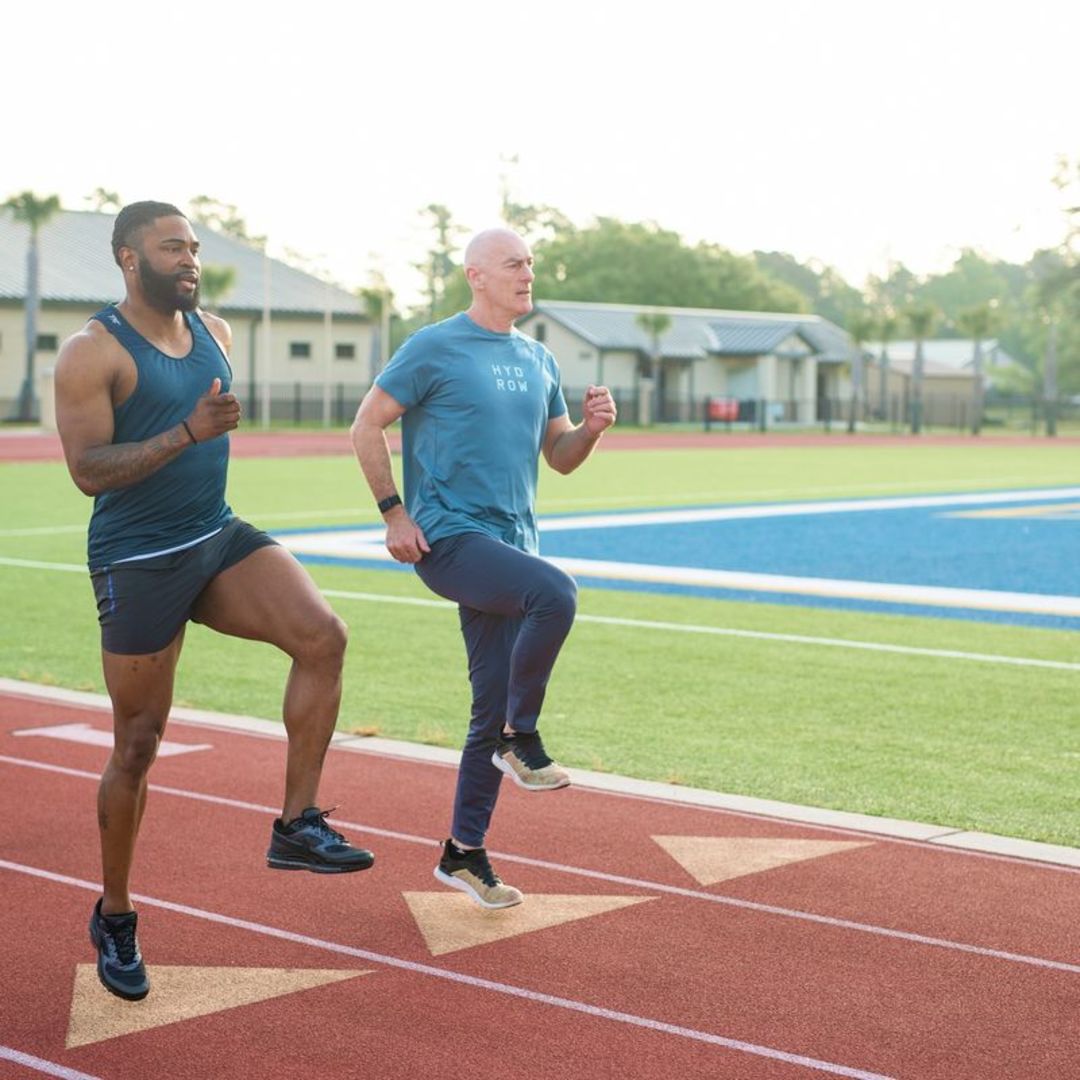What Is Active Recovery?

Whether or not you’re a fitness fanatic, you may have heard the term “active recovery.” This is likely due to the emphasis on high-intensity workouts known to push participants to their limits, increasing endurance and slashing calories.
While the former effects are much appreciated and receive most of the attention, one essential aspect of exercise that is often overlooked is recovery. Recovery is just as crucial as the workout itself, allowing your muscles to repair and grow stronger. As a result, one particular approach to recovery that is becoming popular is active recovery.
If you’re interested in learning more and incorporating this method into your fitness regimen, then you’ll definitely want to check out the following topics:
Let’s get started!
What is active recovery?
Active recovery refers to engaging in low-intensity physical activity after a high-intensity workout or on rest days. Unlike passive recovery, where you rest completely and avoid physical activity, active recovery involves light exercises that keep your body moving without putting additional stress on your fatigued muscles. This method keeps blood flowing to relieve sore muscles, helping remove waste products like lactic acid and facilitating quicker muscle repair.
Examples of active recovery exercises include rowing, walking, cycling on a stationary bike, swimming, or even a gentle yoga session. These activities can be performed at a much lower intensity than your regular workouts, allowing your body to recover while still being active.
Why recovery is so important in exercise
Understanding the importance of recovery in exercises is essential for anyone serious about their fitness journey. When you work out, especially during strength training or high-intensity exercises, your muscle fibers experience tiny tears. These microtears are necessary for muscle growth, but they require time to heal and rebuild. Without adequate recovery, you risk overtraining, which can lead to a decrease in your performance, increased risk of injury, and overall burnout.
Recovery is also crucial for the central nervous system, which gets taxed during intense workouts. Your central nervous system needs time to recuperate so that it can effectively send signals to your muscles during your next workout. This rest period also allows your energy stores to replenish, ensuring you have enough fuel for your next round of physical activity.
The benefits of active recovery
Incorporating active recovery into your fitness routines can be an excellent way to increase your movement throughout the week without adding undue stress to your body. Check out some of these incredible advantages you can gain from recovering actively:
Increased blood flow
Reduced muscle soreness
Maintenance of flexibility and mobility
Mental relaxation
Healthy habit formation
1. Increased blood flow
Active recovery increases blood flow to the muscles, delivering oxygen and nutrients necessary for muscle repair. This improved circulation also aids in the removal of metabolic waste products that build up during intense exercise, such as lactic acid. While “rest day” implies a day of relaxation, it’s still a great idea to keep your body moving to get that blood pumping.
2. Reduced muscle soreness
Engaging in low-intensity exercise can help alleviate delayed onset muscle soreness (DOMS), which typically occurs 24 to 48 hours after a workout. By keeping your muscles moving, you can prevent stiffness and promote quicker recovery.
3. Maintenance of flexibility and mobility
Active recovery workouts like stretching or yoga can help maintain or even improve your flexibility and mobility. This can be particularly beneficial after a strength training session, when your muscles may feel tight or fatigued. Moreover, stretching is a great way to prevent muscle injury by gently increasing blood flow without introducing more microtears.

What’s your workout style?
Take our quiz and get a customized 14-day training program.
4. Mental relaxation
Taking part in a low-intensity activity can also provide mental relaxation while improving your mental health, reducing stress, and helping you stay consistent with your fitness routine without feeling burnout. Pop on your favorite playlist and take a stroll outside to disconnect from work and reconnect with yourself and nature.
5. Healthy habit formation
By incorporating active recovery into your routine, you maintain the habit of regular physical activity, even on days when you’re not pushing your limits. Sometimes even one day of disruption to your routine can throw off the whole week, so keep your carved-out time for fitness in your schedule each day but incorporate low-intensity workouts for active recovery.
The difference between active and passive recovery
Active and passive recovery are two distinct approaches to recuperation, and each has its place in a well-rounded fitness program. As we’ve discussed, active recovery involves low-intensity physical activity. This method keeps the body moving, which can speed up the recovery process by increasing blood circulation and promoting muscle repair. Active recovery is ideal on rest days or the day after a particularly grueling workout.
Passive recovery, on the other hand, involves complete rest. This means no physical activity, allowing your body to fully recover without any additional stress. Passive recovery is particularly useful after periods of extreme exertion or if you’re coping with an injury that requires rest.
Different types of active recovery
There are various types of active recovery exercises you can incorporate into your fitness routine. The type you choose will depend on your fitness level, the intensity of your previous workouts, and your personal preference. Check out some popular options:
Walking
Rowing
Cycling on a stationary bike
Swimming
Yoga or stretching
Foam rolling
1. Walking
Walking is one of the simplest and most accessible forms of active recovery. It’s low impact and easy on the joints, making it an excellent option after a strenuous workout. Try walking outside with a friend to incentivize this type of recovery.
2. Rowing
You can use a rowing machine for active recovery without putting too much strain on your body by keeping your intensity low and focusing on smooth, steady strokes rather than pushing for speed or power.

Explore Hydrow’s library of 5,000+ rowing, circuit training, yoga, Pilates, and mobility workouts.
3. Cycling on a stationary bike
Light cycling on a stationary bike is a great way to keep the blood flowing without placing too much stress on your muscles. It’s particularly effective after lower-body workouts as it primarily engages your legs and glutes.
4. Swimming
Swimming provides a full-body workout that is gentle on the muscles and joints. The buoyancy of water reduces strain while still providing enough resistance to keep your muscles engaged.
5. Yoga or stretching
Like we’ve mentioned, gentle yoga or stretching sessions can help improve flexibility and release tension in sore muscles. These activities also promote relaxation and mental recovery. Try stretching after your next workout and on your “rest days.”
6. Foam rolling
Foam rolling, or myofascial release, is a type of active recovery that targets the fascia—the connective tissue surrounding your muscles. By applying pressure to specific points on the body, your foam roller can help reduce muscle tightness and improve blood flow.
You’re ready to get started!
Incorporating active recovery into your fitness regimen is a valuable habit that offers a range of benefits, from reducing muscle soreness to promoting mental relaxation. By including active recovery exercises like walking, swimming, or foam rolling, you can enhance your overall fitness performance and reduce the risk of injury.
Keep in mind that dedicating days to recovery is not taking a step back or becoming lazy. Recovering is an essential part of increasing strength and resilience. So, next time you’re planning your workout routine, consider adding an active recovery day to keep your body in peak condition.
If you’re looking for a piece of workout equipment that can jive with your high-intensity workouts and your active recovery days, consider investing in a rowing machine like Hydrow. Rowing activates 86% of your muscles with every stroke, making it one of the most efficient ways to build total-body strength. In just 20 minutes on a rowing machine, you can get a full-body workout that boosts energy, builds endurance, and helps you move better—on and off the rower.
And with Hydrow, it’s easier than ever to stay consistent. No commute. No waiting for machines. Just expert-led workouts you can do from home, whenever it works for you. Choose from rowing, strength training, mobility, yoga, Pilates, and circuit training workouts, all designed to help you move better and feel stronger, long-term.
Our workouts are filmed on location in stunning waterways around the world and led by world-class Athletes who coach you through every stroke and rep. And with over 5,000 workouts ranging from beginner to advanced, it’s easy to keep progressing no matter your level.
Every movement adds up. Start building strength that lasts with Hydrow.

Real strength keeps moving
Learn how working out with Hydrow can help support a fuller, more active life.









